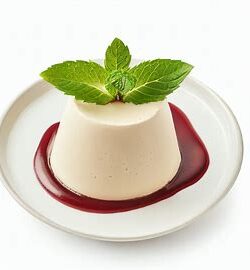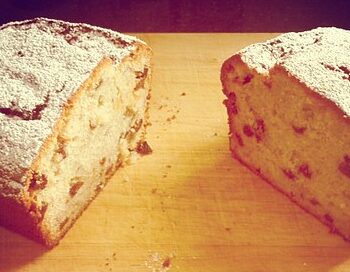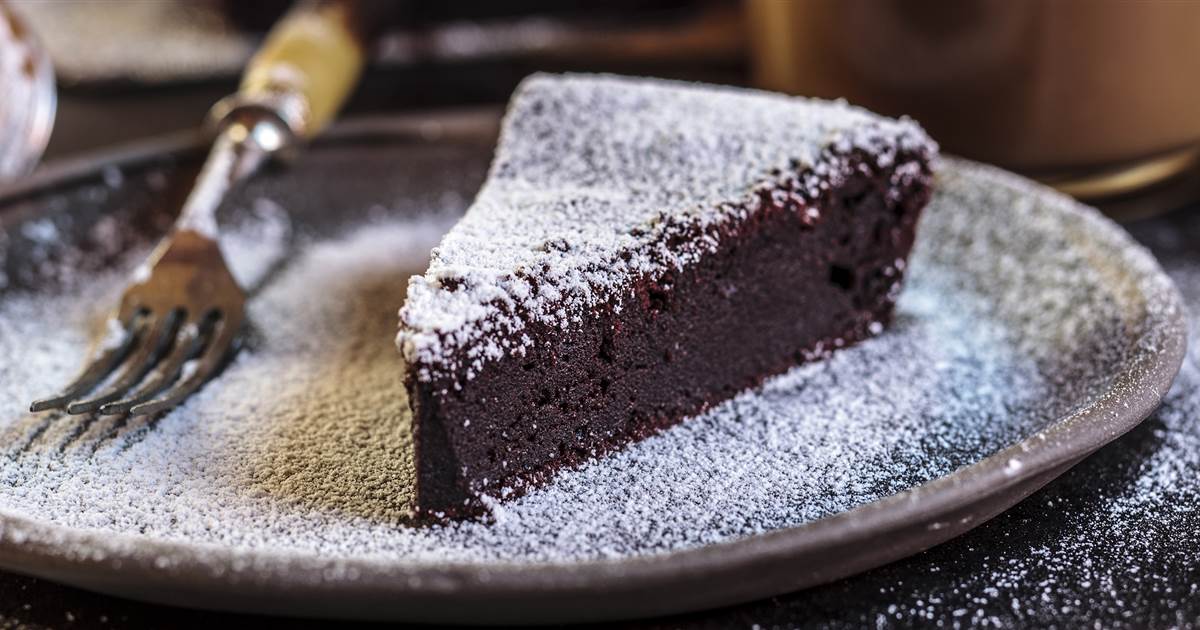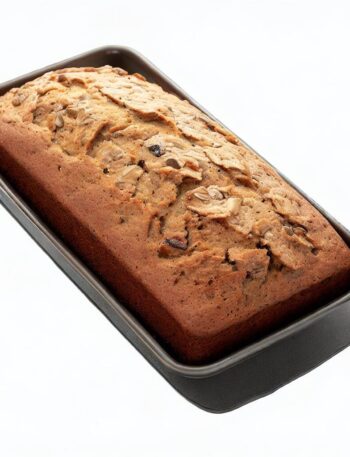Vegan Panna Cotta Recipe: Indulge in this creamy dessert.
When it comes to desserts, few things can compare to the smooth, creamy texture of panna cotta. Traditionally made with dairy ingredients, panna cotta has become a beloved dessert worldwide. But what if you follow a vegan lifestyle or have dietary restrictions? Fear not, because we have a delicious solution for you – a vegan panna cotta recipe that will leave you craving for more.
Panna cotta, an Italian dessert that translates to “cooked cream,” is known for its luxurious consistency and delicate flavors. By swapping out the dairy components with plant-based alternatives, we can create a vegan version that is equally satisfying and delightful. This recipe allows you to enjoy the irresistible creaminess of panna cotta while remaining true to your dietary choices.
Ingredients:
- 1 1/2 cups of full-fat coconut milk
- 1 1/2 cups of unsweetened almond milk (or any other plant-based milk of your choice)
- 1/4 cup of granulated sugar (adjust to taste)
- 1 teaspoon of agar-agar powder (a vegan gelatin substitute)
- 1 teaspoon of vanilla extract
- Fresh berries or fruit compote, for garnish (optional)
Instructions:
- In a medium saucepan, combine the coconut milk, almond milk, and sugar. Stir well to dissolve the sugar and bring the mixture to a gentle simmer over medium heat.
- Sprinkle the agar-agar powder over the milk mixture and whisk continuously for about 5 minutes, or until the agar-agar is completely dissolved. Make sure there are no lumps.
- Remove the saucepan from the heat and stir in the vanilla extract. Allow the mixture to cool for 10-15 minutes.
- While the mixture is cooling, prepare your serving dishes. You can use ramekins, glass cups, or any other molds of your choice. Lightly grease the molds with a neutral-flavored oil to ensure easy removal of the panna cotta later.
- Pour the cooled mixture into the prepared molds, filling them to about 3/4 full. If desired, you can strain the mixture through a fine-mesh sieve to remove any remaining lumps.
- Place the molds in the refrigerator and let the panna cotta set for at least 4 hours, or preferably overnight. The agar-agar will work its magic and create the perfect creamy texture.
- Once the panna cotta has set, remove the molds from the refrigerator. To loosen the desserts, gently run a knife around the edges of each mold. Place a serving plate upside down on top of the mold and invert it to release the panna cotta onto the plate.
- Garnish the vegan panna cotta with fresh berries or a luscious fruit compote. The vibrant colors and flavors will complement the creamy base beautifully.
Vegan panna cotta recipe is sure to impress!
Now it’s time to savor your homemade vegan panna cotta. With its velvety texture and delicate sweetness, this dessert is sure to impress your taste buds and leave you wanting more. The best part? It’s dairy-free, cruelty-free, and suitable for vegans and non-vegans alike.
Whether you’re hosting a dinner party, celebrating a special occasion, or simply treating yourself, this vegan panna cotta recipe is a wonderful choice. Enjoy the creamy goodness guilt-free and revel in the fact that you’ve created a dessert that is both kind to animals and incredibly delicious. Bon appétit!
History
Timeless Italian Delicacy with a Rich History
Panna cotta, meaning “cooked cream” in Italian, is a luscious and elegant dessert that has captivated the taste buds of food enthusiasts around the world. With its smooth and creamy texture, delicate flavors, and versatile nature, panna cotta has become a staple on dessert menus and a favorite among those with a sweet tooth. But have you ever wondered about the history behind this delectable treat? Let’s embark on a journey through time to explore the origins and evolution of panna cotta.
The Origins:
While the exact origin of panna cotta remains a subject of debate, most culinary historians attribute its creation to the Piedmont region in northern Italy. This region, renowned for its rich culinary heritage, is also known for producing exquisite dairy products, including cream. The earliest recorded mentions of a similar dessert date back to the 19th century when Piedmontese cooks began experimenting with sweetened cream-based desserts.
Traditionally, panna cotta was made by simmering cream, sugar, and vanilla together, then adding gelatin to achieve the desired texture. The dessert was typically served chilled and accompanied by fruit compotes, caramel, or chocolate sauce.
Evolution and Popularization:
Panna cotta’s popularity gradually spread beyond the Piedmont region, captivating the palates of Italians across the country. Its simple yet elegant presentation, combined with the ability to customize flavors and pairings, contributed to its widespread appeal. Over time, variations of panna cotta emerged, incorporating local ingredients and regional flavors.
One of the reasons for panna cotta’s success is its adaptability to different culinary traditions. Chefs and home cooks alike embraced the dessert and began infusing it with their own creative twists. From the addition of liqueurs like Amaretto or Limoncello to incorporating seasonal fruits and aromatic spices, panna cotta became a canvas for culinary experimentation.
The dessert’s international recognition can be attributed in part to its inclusion in renowned Italian cookbooks and the growing popularity of Italian cuisine worldwide. As Italian restaurants spread across the globe, panna cotta found its way onto menus, captivating diners with its luxurious simplicity.
Panna Cotta Today:
In recent years, panna cotta has experienced a renaissance, with chefs and home cooks pushing the boundaries of flavor and presentation. While the classic recipe remains cherished, innovative variations have emerged, showcasing the dessert’s versatility. From dairy-free and vegan versions using coconut milk or almond milk to the incorporation of unique ingredients like matcha, chai, or even savory elements, panna cotta has evolved to suit various dietary preferences and culinary trends.
Additionally, panna cotta has found its place in modern gastronomy, often served alongside more complex desserts as a refined palate cleanser or a light conclusion to a multi-course meal. Its creamy texture and delicate sweetness provide a pleasant contrast to bolder flavors, making it a versatile choice for chefs aiming to create harmonious dining experiences.
Panna Cotta: A Timeless Delight
As we explore the history of panna cotta, it becomes evident that this Italian delicacy has come a long way. From its humble beginnings in the Piedmont region to its widespread popularity across continents, panna cotta has firmly established itself as a timeless dessert.
Today, whether you enjoy a classic vanilla panna cotta, an exotic variation bursting with tropical flavors, or a daring interpretation that pushes culinary boundaries, one thing remains certain: panna cotta continues to captivate our senses and provide moments of indulgence.



